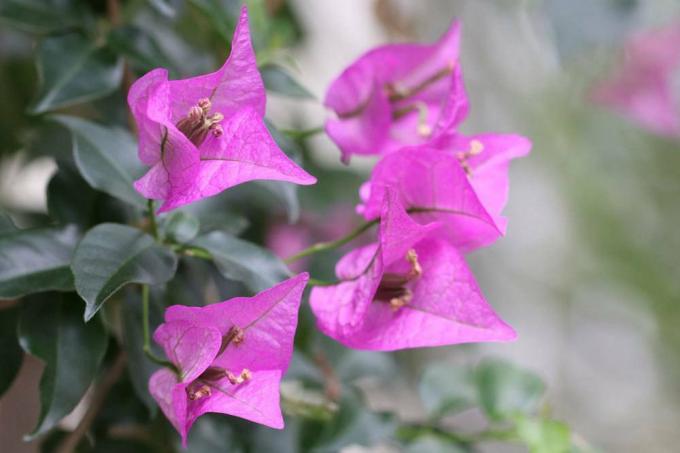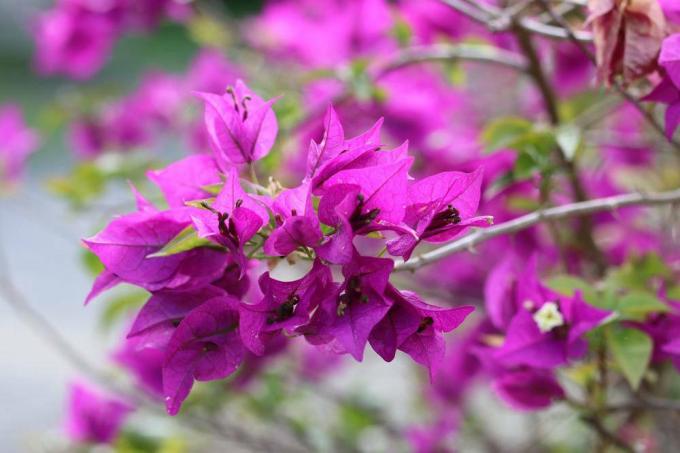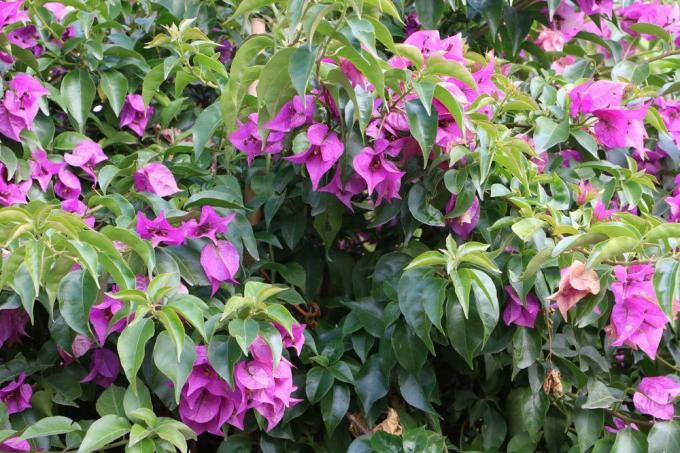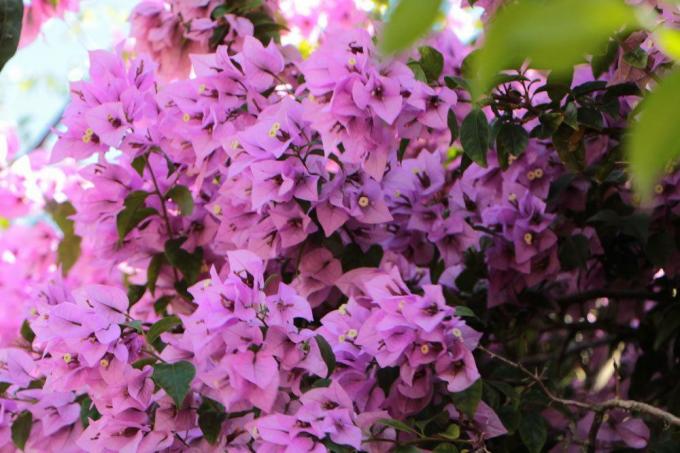
table of contents
- Hibernation
- Location
- wintering
- Winter cold
- Warm winter
- End of winter
The bougainvillea is a colorful plant named after the French navigator Louis de Bougainville. It belongs to the miraculous flower family and is characterized by colored bracts. These leaves are often mistaken for flowers. However, these are smaller and between the bracts. Since the bougainvillea has three flowers, it is called the triple flower. It is used to sunny and warm climates. You can find out how it best hibernates here.
Hibernation
Preparing for hibernation
The bougainvillea usually presents its magnificent leaves and flowers well into autumn. This is because it has to soak up enough sun and strength before it reaches a lush bloom. So it may be that you have to bring the bougainvillea to its winter quarters while it is in bloom. Another option is to let the pot ball dry out slowly in autumn. Then the foliage of the bougainvillea wilts until it finally sheds it all. Now you can bring the climbing plant to its winter quarters.
Tip: Allowing the triple flower to dry out and sprout again is also helpful if the plant is no longer blooming as profusely. As a result, it will be revitalized and will bloom again magnificently in the future.

Location
Since the climber is native to the subtropics and the Mediterranean, most varieties are not winter hardy. They must be moved to a suitable location over the winter.
This looks like this:
- bright
- cool
- 8 to 10 ° C are ideal
wintering
Start of wintering
The subtropical bougainvillea has a very low tolerance to frost. For this reason, the right time to overwinter is particularly important for this plant. You should make sure to bring the climbing plant to its winter quarters early enough. After the winter months, it's important to wait long enough to take them outside. The following applies to mild regions where the first frost does not come until the beginning of November.
- Cold protection from mid-October
- from the end of October to winter quarters
- definitely before the first frost

If you live in a colder region, it is better to get the bougainvillea to its location for the winter as early as mid-October. This applies, for example, to places of residence in the Alps and the low mountain ranges.
Winter cold
The bougainvillea can be overwintered cold or warm. Each method has its advantages and disadvantages. Which variant you choose depends on which location you have available and whether you can wait a little longer for the sprouting in spring. This is how the bougainvillea reacts to cold wintering.
- she throws off leaves
- it is easy to care for
- it sprouts later in the spring
An unheated outbuilding with a window is a suitable location for this variant. An alternative is a cold winter garden. In any case, it must be ensured that the temperature does not drop below 0 ° C.

Care in cold winter
Before you bring the triple flower to its roost for cold wintering, you can prune it a little. If space is scarce in the winter location, you can cut the side shoots in particular a little. Otherwise, the bougainvillea does not need a lot of care with this hibernation method.
Please note:
- remove fallen leaves
- not pour
- do not fertilize
Removing the foliage will help prevent disease. It should not be watered because the triple flower does not tolerate water so well in the cool temperatures.
Warm winter
The ideal location for this is a warm winter garden. The following things must be observed when taking this measure.
- Plant retains its foliage
- a lot of warmth
- lots of light
The bougainvillea should be set up in the heated winter garden in such a way that it receives enough light from all sides. If there is often an overcast sky throughout the winter, it makes sense to provide the bougainvillea with additional light. You can use a plant lamp for this, for example. If you don't have a winter garden, the subtropical climbing plant can also be in the living room.

In that case, however, you should pay attention to:
- a lot of light
- Use plant lamp
- Pest control
- Remove pests immediately
Care in warm winter
With this method, the climber evaporates more water. That is why it has to be poured more often. In between, test whether the soil feels dry and water it if necessary. A practical aid is a moisture meter that automatically shows you whether you have to water.
End of winter
End of wintering
The triple flower usually begins to sprout again in February or March. The exact time depends on how bright your quarters were during the winter months. If it sprouts, you should move it to a location that meets the following conditions.
- bright
- warm
- 15 to 20 ° C are ideal

When the first leaves show up, you can start watering again. Now is also the right time for the first fertilizer. In this way, the triple flower can fill up with fresh nutrients and soon present its magnificent leaves and flowers. You can fertilize every week - more often would not be good. The bougainvillea can go outside if the following conditions are met.
- Mid or late May
- no more night frosts
- protected location
- south orientation is ideal

